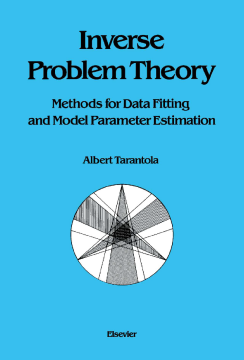
Additional Information
Book Details
Abstract
Inverse Problem Theory is written for physicists, geophysicists and all scientists facing the problem of quantitative interpretation of experimental data. Although it contains a lot of mathematics, it is not intended as a mathematical book, but rather tries to explain how a method of acquisition of information can be applied to the actual world.
The book provides a comprehensive, up-to-date description of the methods to be used for fitting experimental data, or to estimate model parameters, and to unify these methods into the Inverse Problem Theory. The first part of the book deals with discrete problems and describes Maximum likelihood, Monte Carlo, Least squares, and Least absolute values methods. The second part deals with inverse problems involving functions.
The book is almost completely self-contained, with all important concepts carefully introduced. Although theoretical concepts are strongly emphasized, the author has ensured that all the useful formulas are listed, with many special cases included. The book will thus serve equally well as a reference manual for researchers needing to refresh their memories on a given algorithm, or as a textbook in a course for undergraduate or graduate students.
This book represents the most comprehensive review of the applied inverse problems ... very much recommended to the geophysicist with an interest in mathematics, and this must be nearly all of us. The detailed treatment of inverse problems, discrete as well continuous, makes it a most valuable tool not only for geophysicists, but for everyone working on physical data interpretation. This book is very useful for graduate and undergraduate courses on the subject of inverse problems and methods for physical data interpretation.
Pageoph
I would particularly recommend this volume to anyone who wishes to dig more deeply into the subject of inverse (both discretized and general) theory.
Geophysics
